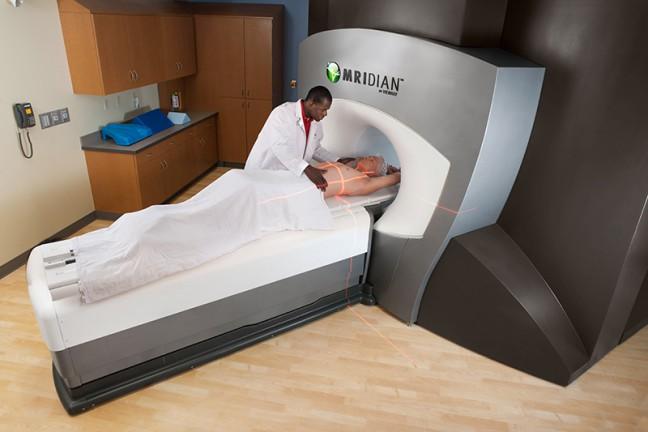University of Wisconsin Health doctors are using a new MRI machine — one of only three in the nation — called the MRIdian to view cancerous tumors during radiation treatment.
During typical radiation treatment, doctors have to use X-ray or CAT scan technology to align the patient’s tumor with the radiation treatment before it is administered, Michael Bassetti, UW Health radiation oncologist, said. During the actual treatment, doctors are not able to see what is happening inside the patient, he said.
The MRIdian, however, allows doctors to see soft tissue within the patient with more definition than an X-ray or CAT scan could, Bassetti said. Because the machine can view the patient’s tumors before administering radiation, doctors will have an image of the patient constantly, he said.
“What an MRI allows us to do is to visualize movement of tumors [and] movement of nearby organs while we’re actually administering the radiation treatment,” Bassetti said. “This is basically marrying an MRI machine with radiation treatment.”
UW Health’s physics department heard about the MRIdian early in its development and was able to be involved in early adoption and use of the machine after it was clear it was a successful treatment unit, he said.
UW was the second school to adopt the MRIdian after Washington University in St. Louis, with the University of California-Los Angeles also using the machine, Bassetti said.
“The University of Wisconsin physical and radiation oncology department has been a very innovative department for a long time in terms of adoption technologies,” Bassetti said. “They’ve always been forward looking.”
With the MRIdian, UW Health doctors are able to administer radiation to less of the patients’ body by having them repeatedly hold their breath, Bassetti said. The software stops automatically as it is tracking the tumor because the radiation is only delivered if the tumor is in the correct position, he said.
“For tumors in the abdomen or the lung, as [the patient is] breathing there’s a lot of movement of the tumor,” he said. “If you can limit the amount of movement of the tumor, then we can focus the radiation on a smaller area, limiting the radiation that goes to or near other organs.”
Other universities and hospitals overseas currently have orders in place for MRIdian, Bassetti said.
(Correction: this article previously referred to the MRIdian as the ViewRay, which is the name of the company, not the technology. The Badger Herald regrets this error.)


